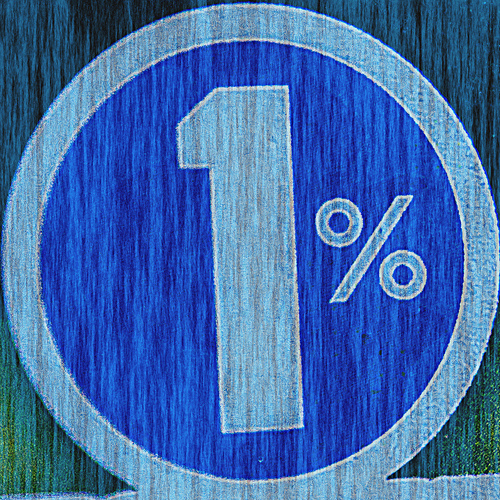I'd arrived to a warm morning in Austin, Texas, but by late afternoon I was one of six startups getting an icy-cold reception in a riverside hotel.
After pitching each of the products, it was time to hear from the district administrators.
And then it happened, almost out of nowhere. Someone was unhappy that startups often drop the F-bomb.
"I wish that startups would stop giving away things for free," she said.
My first reaction was confusion, since I'm often asked by teachers if I'll give them our software for free.
But then I realized this buyer was frustrated that free products, without plans for sustainability, often lead to hidden costs for a district.
There's support cost to help teachers when none is provided by the company. There's budgetary cost when free products become not free mid-year. And there's instructional cost when free products suddenly go out of business.
Does this reality mean ed-tech-landia needs to abandon teachers as a distribution channel for their "free" products? Probably not.
But teachers don't have the authority to adopt your technology across the district, so a district-level-buyer's concerns are important to address.
The simplest method to explain sustainability is to have clients pay directly. In the case of Edthena, a classroom observation platform to analyze videos of teaching, organizations pay us a subscription fee. The implicit agreement is that we can sustain the business for the duration of our agreement.
Beyond offering a direct purchase, organizations must offer something for free*.
I used an asterisk because I believe there are different types of free in the eyes of the buyer. There are versions of free that explain a product's plan for sustainability by paying the real costs indirectly.
So this made me wonder what types of free* ed tech wouldn't set off alarm bells of an administrator.
Here are four models for free* distribution that may be convincing enough to win a district's' confidence and, ultimately, adoption of your product:
Free* via advertising
If you've ever been offered a free vacation to the Bahamas, it's not going to be four days of toes-in-the-sand bliss.
The free* trip will certainly include an extended sales pitch about buying one of the beach-side timeshare properties. Apparently enough people decide to buy their timeshare this way that the model sustains the proprerties.
In education, a great example of advertising-supported content is the dictionary. No longer must a student trek to the library to open up a dusty tome of the English language.
Instead, many of the English-speaking-world's most trusted sources for definitions are available for free at www.dictionary.com.
The site can afford to license the official dictionary content and give it away for free because more than 10 million people visit the site each month.
That's a lot of eyeballs looking at a lot of ads. And some of the people undoubtedly decide to click on one of those ads promoting something like a free vacation to the Bahamas.
Free* via donations
Oprah Winfrey interviewed many notable guests during the run of her eponymous show, yet one of her most memorable moments was when she proclaimed, "You get a car! You get a car! You get a car!" to everyone in the audience.
How was it possible to give everyone in the audience a brand new car? It was free* because Pontiac was footing the bill.
In education, there are also some really over-the-top giveaways available to educators in the audience. It's possible because donors are actively investing in certain organizations to ensure they can continue to operate.
A great example is the free, digital textbooks developed by CK-12 Foundation.
High quality textbooks are expensive to produce, yes. But the nonprofit is being supported wholly by philanthropists who see the business goal as giving away content.
They more they give away, the more money they can justify raising and spending.
Free* via cost-offset purchases
When California temporarily banned the sale of foie gras, some restaurants started offering free foie gras.
How was this possible? It was actually free* foie gras with purchase of a $21 brioche. Everyone understood that they were subsidizing the cost of their free item with the purchase of another item.
In the education world, this model is being used successfully by Clever, a system for syncing student data between the district and various apps.
Clever gives its product away for free* to districts, and Clever recovers their own operational costs by charging app developers to connect and access the district data. Administrators know they'll ultimately have to pay when buying the "Clever enabled" versions of software.
This free distribution strategy has afforded Clever the opportunity to grow impressively during the past few years.
We're actually utilizing this strategy at Edthena, too, to drive the distribution of our edTPA tools. As an approved edTPA platform provider, we offer free tools for teacher candidates to assemble artifacts and securely transfer to Pearson for scoring.
We offer this for free since we believe that organizations using our edTPA tools may someday choose to adopt the entire Edthena platform. We also support a free site called edTPA Tips with this same end-goal in mind.
Free* via a few paying customers
Smartphones aren't much for talking. They're powerful gaming machines that help fill our day with free* and high-quality games.
Games sometimes cost a significant sum to produce, but each new individual user is actually low cost to the business. The app stores handle the cost of distributing the games, and the end-users pay for all the processing power required to run the games.
And if you're like the fabulously infuriating TwoDots game, sometimes a small percentage of your millions of users decide to buy an extra life for just $0.99.
And when a few thousand people choose to pay you a small amount relatively regularly, you suddenly have a large and sustainable business.
This is the similar story for Quizlet, a free flashcard-making site for students and teachers. They built a product that could be sustained at a relatively low cost as they continued to scale.
It doesn't take a lot of extra storage or computing power to create the next free set of flashcards. To date, users have created more than 40 million free study sets on the site.
And out of the many many many users of Quizlet, a small but meaningful amount choose to pay for premium features. And that small number (percentage wise) is enough to make the company profitable and sustainable.
Free like Tom Petty, a heartbreaker
Many companies want to be like Quizlet. But they are focused only on growth instead of finding the answers to the questions about what can make them sustainable.
I call it out because sometimes being honest and realistic about where you are is hard. Unless you have a venture-capital backer (like Remind) as your app is taking off like a rocketship (like ClassDojo), you're a free product instead of a free* product.
Products in this category can't explain (reasonably) how they're going to survive as they try to get to scale. This is the danger-zone for district administrators.
Maybe you have some small amount of funding today, but how do you really survive for the long-haul?
_____________
Thanks to Devin Dillon, Chief Academic Officer of Oakland Unified School District, for providing feedback on this article before publication.
Adam Geller is founder and CEO of Edthena, a video platform for classroom observation which supports teacher professional development. He started his education career in the classroom as a science teacher.




